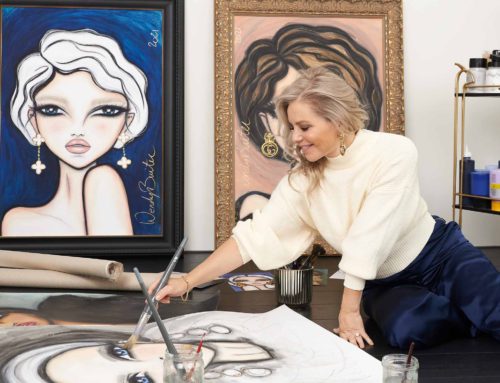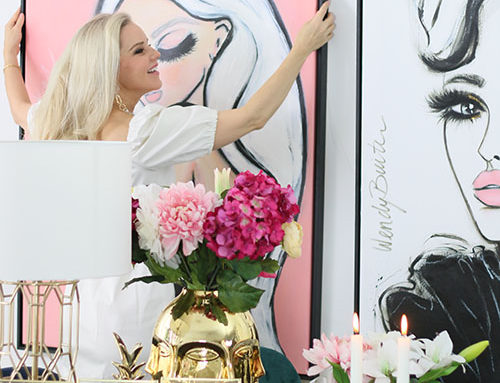“What is the value of this artwork that I own”, “ For how much can I resell my Wendy Buiter artwork?” “What is this piece worth?” … and many more variations are questions we receive a lot! Let us answer these questions:
Art, in its myriad forms, is not merely a source of beauty and inspiration but also a potential investment that can grow in value over generations.
As an artist, I often receive inquiries about the worth of artworks, whether they are original masterpieces or limited edition prints. It’s a natural curiosity, fueled by the growing popularity of my art and the recognition that even something initially appreciated for its aesthetic might also be an asset.
The Intricate Dance of Value
The question of what makes an artwork’s value increase over time is complex, weaving together strands of artistic merit, historical significance, rarity, and the ever-pivotal role of marketing.
Consider these artists:
- Vincent van Gogh (1853-1890) – Today, Van Gogh is one of the most famous and influential figures in the history of Western art. However, during his lifetime, he experienced little success and was known to sell only one painting. His fame grew after his death, thanks to the efforts of his sister-in-law, who worked to get his works recognized.
- Paul Cézanne (1839-1906) – Cézanne is now regarded as a pivotal figure in the transition from 19th-century Impressionism to 20th-century Cubism. However, his work was not well received during much of his life, and his artistic genius was only recognized by a small circle of artists and critics towards the end of his career.
- Johannes Vermeer (1632-1675) – Vermeer was a Dutch painter who specialized in domestic interior scenes of middle-class life. He was relatively unknown during his lifetime and fell into obscurity after his death, with his work being attributed to other artists. It wasn’t until the 19th century that Vermeer gained recognition, and he is now considered one of the greatest painters of the Dutch Golden Age.
This highlights a crucial point: the value of art is not always apparent to contemporaries, and the role of posthumous promotion cannot be overstated.
The Master of Self-Promotion: Picasso
Pablo Picasso offers a contrasting narrative. A master not just of his art but also networking and self-promotion, Picasso understood early on that visibility and reputation could significantly enhance an artist’s market value. He was a celebrity in his own time, but the true financial appreciation of his works has only amplified with the passing decades.
This demonstrates that while immediate recognition can elevate an artist’s profile, the long-term financial trajectory of their work is often a slow and steady climb.
The Long-Term Perspective
For collectors and enthusiasts of my work, the principle remains the same. Art is a long-term investment. It requires patience and a vision that extends beyond years to decades, even centuries.
The preservation of the artwork plays a critical role in this equation. Exposure to sunlight, moisture, or improper handling can diminish an artwork’s physical state and, by extension, its value.
As the creator of your piece, I cannot stress enough the importance of meticulous care. Please protect it from environmental hazards and ensure any cleaning or maintenance does not compromise its integrity.
Beyond the Masters: The Emerging Icons
The art world is replete with examples of artists who, while not household names in their time, have gained recognition and value as the years have passed. Marc Chagall, Rembrandt, and others have seen their work re-evaluated and esteemed by new generations. Their stories often share common themes—exceptional talent, a unique perspective, and, invariably, the crucial role of marketing and advocacy by patrons and family.
Take, for example, an artist who may not have enjoyed widespread fame during their lifetime but whose work has steadily gained recognition and value. This gradual appreciation can be attributed to a variety of factors, including scholarly research, prominent exhibitions, and a growing understanding of their contribution to art history. The state of preservation of their works also significantly impacts their market value, emphasizing the importance of care and conservation.
The Future of Art as Investment
As we look to the future, it’s clear that art will continue to be a significant part of the investment landscape. The stories of Van Gogh, Picasso, Chagall, and Rembrandt remind us of the complex interplay of factors that influence an artwork’s value.
For collectors of Wendy Buiter’s art, the message is one of patience and stewardship. By safeguarding the physical condition of these artworks and understanding the long-term nature of art investment, collectors can navigate the art market with insight and foresight.
The value of art extends far beyond its immediate visual appeal or the fame of its creator at the time of its creation. It is a testament to the enduring power of creativity, the importance of strategic promotion, and the meticulous care by those who hold it. Whether your collection includes a piece by a legendary master or a contemporary artist on the rise, remember that you are not just a collector but a guardian of cultural heritage—a heritage that has the potential to appreciate significantly over time.
Be patient and take very good care of the art!
Final Thoughts
As we journey through the evolving landscape of art and its appreciation, let us cherish each piece not just for its potential financial return but for the story it tells, the emotions it evokes, and the connection it fosters between the past, present, and future. In art, we find a reflection of humanity’s highest aspirations, a source of beauty and inspiration, and, yes, a wise investment for those who look beyond the canvas.
Love,
Wendy Buiter








Leave A Comment
You must be logged in to post a comment.